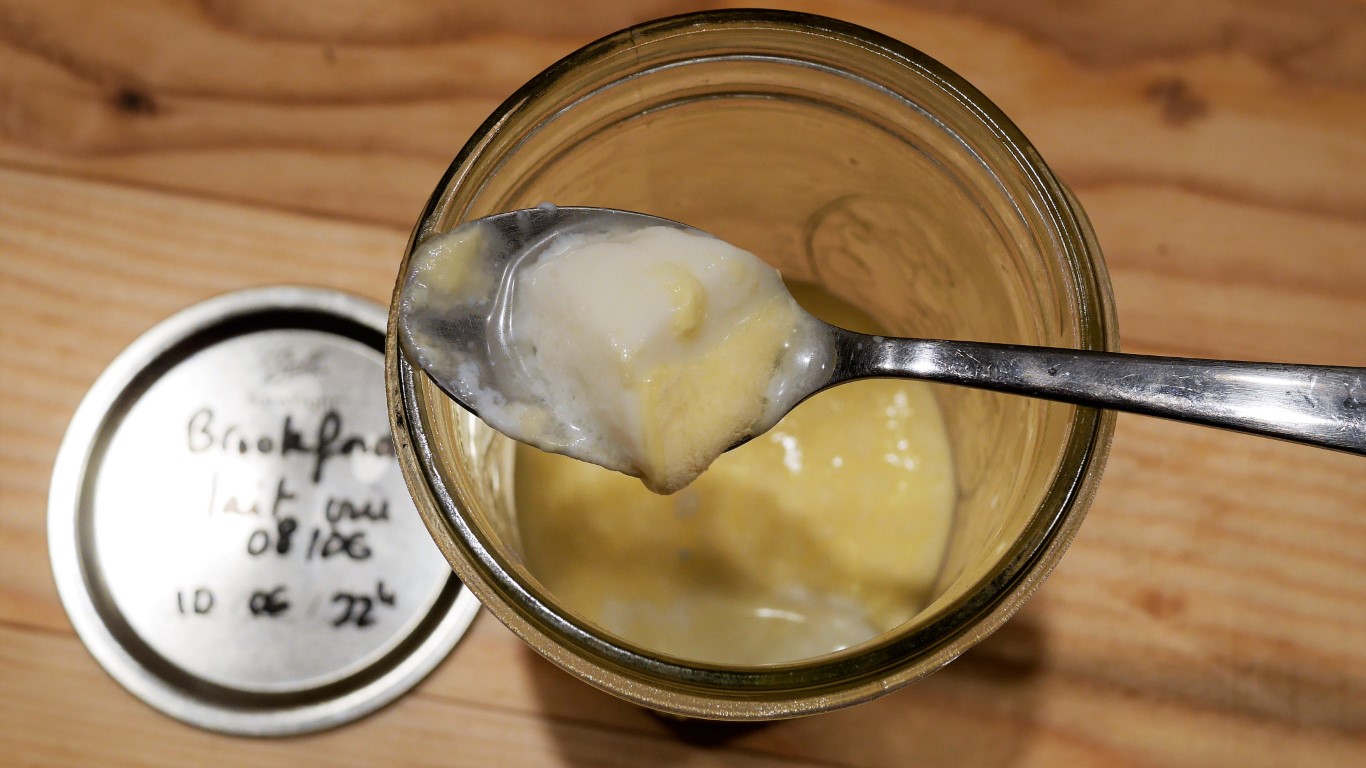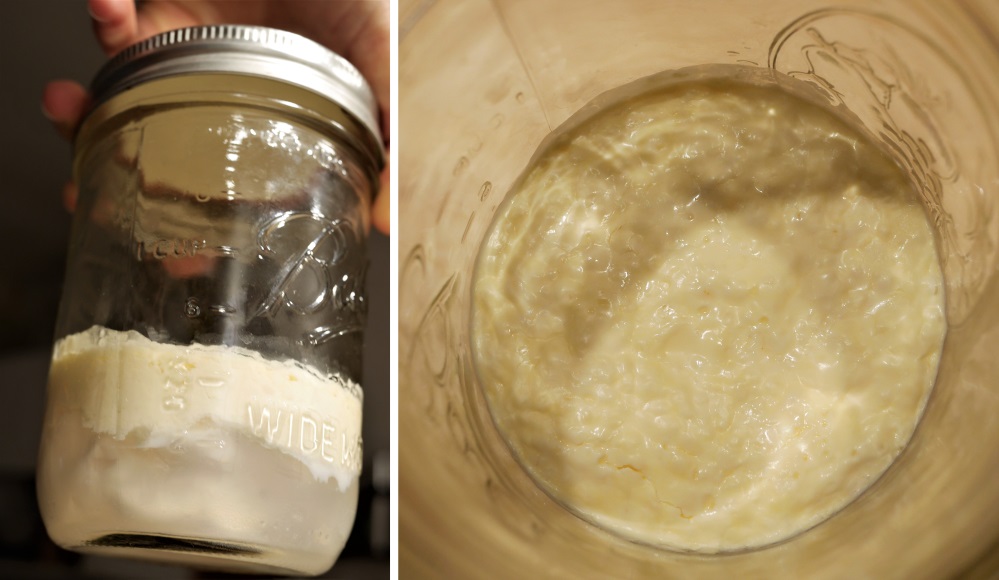
To make cheese you basically need milk, micro-organisms and rennet. To make flavorful and reproducible cheeses you need starter cultures, the same way you need yeast, levain or sourdough starter to make good bread. A starter culture is basically a culture of ferments that will provide the right organisms to your milk for cheesemaking. To understand what is a starter culture, you can read this very detailed article that I wrote earlier.
From raw milk to clabber
To make your clabber you can either get some from a friend or make your own if you have access to raw milk. It is worth mentionning that you can only make clabber from raw milk.
Get some raw milk and leave it at room temperature about 2 days (after milking) in a glass jar (having a transparent container will help you detect any issue). The clabber is ready when the milk has coagulated (see picture above). The milk forms a sort of jelly. It tastes a bit like yogourt, a little acidic.
If it does not succeed, maybe the milk you used was kept too long at cold temperature or the milk has some problem. Try again. You can also try to make it from different sources and keep the one which taste you prefer (micro-organisms can be different depending on multiple factors).
Keep your clabber alive
Once your clabber is ready you just need to feed it with fresh milk. Every day, take a small amount of clabber and add some milk (in the proportions 1:50, roughly). You can feed it every two or three days but feeding it every day makes your culture more active. The more active, the better for cheesemaking. Taste it from time to time, thus you will know how it evolves and you will know how it should taste for your cheeses.
If you need to go on vacation, you can freeze your clabber as ice cubes. To revive your clabber, take an ice cube and add new fresh milk. Feed it every day again. It will take a few days so that your clabber reaches its former activity.
How to make sure your clabber is good?
 Example of problem with milk. Clabber after 2 days left at room temperature.
We can see some bubbles in the cream on top and the milk has curded and separated from the whey very fast, which is a bad sign.
Example of problem with milk. Clabber after 2 days left at room temperature.
We can see some bubbles in the cream on top and the milk has curded and separated from the whey very fast, which is a bad sign.
Here are signs of a good and healthy clabber:
- it has a slight acid odor, which remains pleasant
- slightly acidic taster, a bit like a yogourt
- the consistency is homogenous, eventually some cream may be on top
Some bad signs should alert you:
- gas emission (small bubbles)
- bad smell
- the milk separate in two phases
In those cases do not take any risk and start from scratch. It is very likely that the milk you used had a problem or is too old.